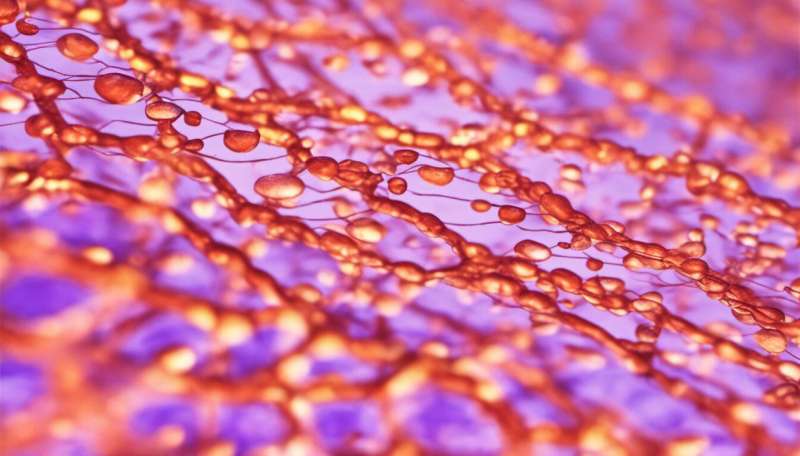Cell membranes: Synthetics save time and cut costs

Screening for critical drug targets known as G-protein-coupled receptors (GPCRs) is now possible without the need to extract these proteins from their native cells. Extraction requires the use of stabilizing lipids, which damage the structural integrity and functionality of GPCRs. The cell-free approach was developed by Madhavan Nallani from the A*STAR Institute of Materials Research and Engineering, Singapore, along with co-workers in Singapore, Germany and Austria.
Nallani and co-workers focused on GPCRs because they are ideal drug targets that pass through cell membranes. These proteins are involved in cell communication, cell adhesion and signal transduction, as well as major illnesses, including hypertension and diabetes.
The team's approach produced GPCRs directly in artificial cell-like pockets called polymersomes. "This [approach] circumvents the tedious protein isolation process and the use of lipids or detergents as stabilizing agents," says Nallani.
As a proof of concept, the researchers synthesized the GPCR dopamine receptor D2 in vitro in the presence of polymersomes and the DNA that encodes for the protein. "This cell-free expression provides an easy way to produce proteins directly from their DNA," notes Nallani. The proteins generated by transcription and translation became incorporated into the polymer-based membranes via spontaneous self-assembly.
Characterization using fluorescently labeled antibodies that are receptor-specific showed that the self-assembled product displayed stronger fluorescence than the unmodified polymersomes, confirming the insertion of the receptor. This characterization also indicated that the membrane-incorporated portion of the receptor was properly oriented in the polymersomes.
Nallani's team further investigated the structure of the polymersome-inserted receptor using a fluorescently tagged dopamine. "Dopamine will bind only if the receptor is correctly folded and oriented," explains Nallani. After incubation, the GPCR-modified polymersomes showed higher fluorescence than the negative controls, indicating that the receptor maintained its structural integrity upon insertion into the polymersome.
The researchers assessed the potential use of the GPCR-modified polymersomes for drug screening and biosensing by synthesizing the receptor in the presence of polymersomes, which they patterned onto glass surfaces. Incubation of the resulting material with fluorescently labeled dopamine illuminated the patterns—proof of a successful GPCR addition. Exposure of these fluorescent patterns to increasing concentrations of unlabeled dopamine caused the fluorescence to decrease, showing that dopamine displaced the fluorescent ligand.
"We are developing this technology through a commercialization project from the A*STAR Exploit Technologies Pte Ltd and focusing on small-molecule and antibody screening," says Nallani. His team is planning to form a start-up company with this approach within the next few months.
More information: May, S., et al. In vitro expressed GPCR inserted in polymersome membranes for ligand-binding studies. Angewandte Chemie International Edition 52, 749–753 (2013). onlinelibrary.wiley.com/doi/10 … e.201204645/abstract
Journal information: Angewandte Chemie International Edition

















